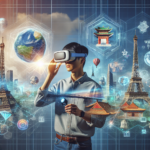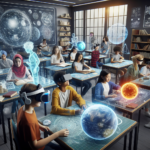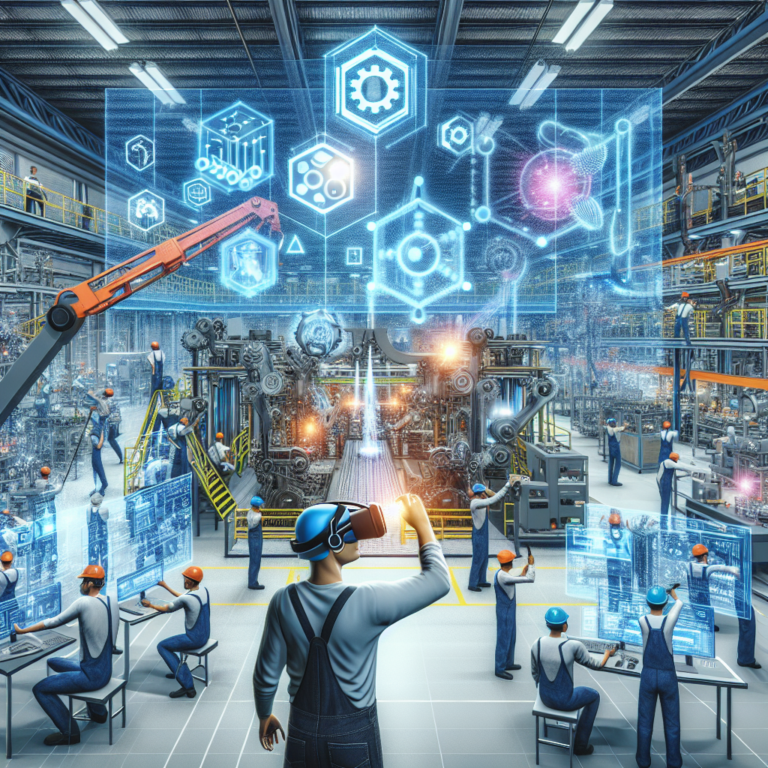The XR Revolution: Transforming Manufacturing and Production Lines 🚀
Understanding XR: The Future of Manufacturing
In recent years, the manufacturing and production sectors have witnessed a technological renaissance, driven largely by the rise of Extended Reality (XR). But what exactly is XR? Simply put, it encompasses a range of immersive technologies including Virtual Reality (VR), Augmented Reality (AR), and Mixed Reality (MR) that are bridging the gap between the physical and digital worlds. These innovative tools are not just revolutionizing how we visualize products; they are also streamlining processes, enhancing productivity, and saving costs in ways that were once thought impossible.
Key Impact Areas of XR in Manufacturing
As XR technology continues to evolve, its applications in manufacturing are expanding rapidly. Here are some of the key areas where XR is making a significant impact:
1. Enhanced Training Programs 📚
Training employees has always been a critical component of manufacturing efficiency. XR technologies are uniquely suited to create realistic training scenarios without the associated risks.
- Immersive Learning: Utilizing VR headsets, new employees can engage in realistic simulations of machinery operation, safety protocols, and complex assembly processes.
- Cost-Effective Training: By reducing the need for physical materials and time spent in traditional training settings, companies can significantly cut costs while improving knowledge retention.
- Instant Feedback: XR systems can provide real-time performance analytics, allowing trainers to adjust their methods and students to grasp concepts quickly.
2. Streamlined Design Processes 🛠️
Gone are the days when designs had to be approved through two-dimensional images and blueprints. XR allows manufacturers to visualize concepts in a 3D space, enabling teams to collaborate and innovate more efficiently.
- Collaborative Designs: Teams can now gather in a virtual space to manipulate and evaluate designs, regardless of their geographic location.
- Faster Prototyping: By leveraging AR, manufacturers can overlay digital models onto physical spaces, allowing them to assess how a product will fit within an existing environment.
- Improved Accuracy: Additionally, visualizing designs in 3D minimizes the misunderstandings that commonly arise with traditional 2D representations.
3. Optimized Production Processes ⚙️
XR has proven to be a game-changer in optimizing manufacturing operations. By leveraging these technologies, companies can enhance their workflows significantly.
- Real-Time Data Visualization: Operators can see critical information projected in real-time on their workstations or through AR glasses, helping them make informed decisions swiftly.
- Remote Assistance: With AR, technicians can receive expert guidance through their devices while working on machinery, leading to faster repairs and reduced downtime.
- Predictive Maintenance: Integrating XR with IoT devices allows teams to analyze data trends and predict when equipment will require maintenance, thus avoiding costly breakdowns.
4. Enhanced Quality Control 🔍
Quality assurance is paramount in manufacturing, and XR technology provides manufacturers with the tools they need to improve this vital process.
- Virtual Inspections: Inspectors can now use VR goggles to visualize intricate product details, helping them detect defects that might otherwise go unnoticed by the human eye.
- Training for Quality Assurance: Furthermore, XR provides hands-on training for quality control personnel, ensuring they are well-equipped to maintain the highest standards.
- Collaborative Audits: In addition, external auditors can be virtually brought into the production facility, enabling more streamlined and interactive audit processes.
Adoption Challenges and Considerations
While the benefits of XR in manufacturing are substantial, adoption is not without its challenges. Here are some essential considerations:
1. Initial Investment 💰
Integrating XR technology into existing systems can require a significant upfront investment in equipment and software. Leveraging XR tools necessitates a careful analysis of costs versus long-term benefits.
2. Customization Needs 🔧
Every manufacturing facility operates differently, meaning that XR solutions must often be tailored to fit unique workflows. This level of customization can lead to complexities in implementation.
3. Employee Acceptance 🤝
Change can be daunting. Companies must prioritize user acceptance and ensure that employees are comfortable with the technology through adequate training and support.
Future Trends in XR and Manufacturing 🔮
The role of XR in manufacturing is poised to grow even further. Some exciting trends to watch for include:
1. AI Integration 🤖
As artificial intelligence (AI) continues to evolve, its integration with XR technologies will create smarter systems capable of making predictions, automating tasks, and personalizing user experiences.
2. Increased Accessibility 🌍
With improvements in XR hardware and software, even small to medium-sized manufacturers can access these advanced technologies, leveling the playing field and making the benefits of XR available to a wider audience.
3. Sustainability Initiatives 🌱
XR can play a vital role in sustainable manufacturing by helping organizations optimize resource usage, reduce waste, and model more eco-friendly production processes.
Conclusion: Embracing the XR Future
The rise of XR technologies is not just a trend; it represents a fundamental shift in how manufacturing operates. By embracing these innovative tools, manufacturers can improve training, streamline processes, enhance quality control, and ultimately boost profitability. In a competitive landscape, staying ahead of technological advancements is essential for success. With XR, the future of manufacturing looks incredibly bright!




0 Comments